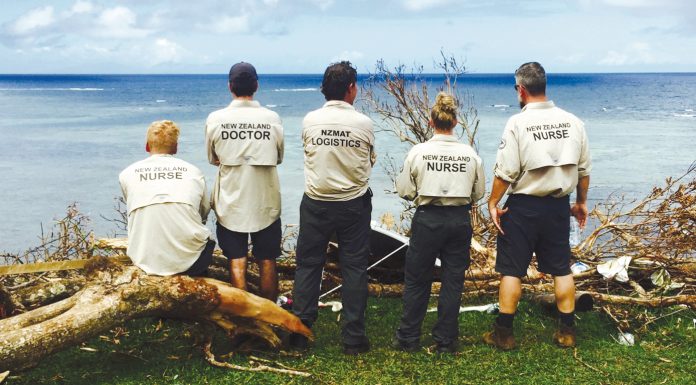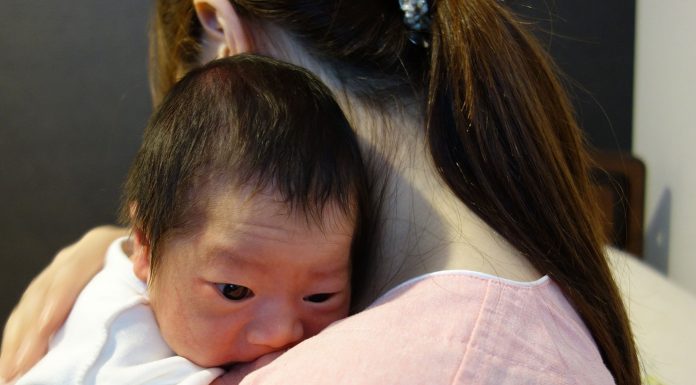By Shelley Jones
LEARNING OBJECTIVES
Reading and reflecting on this article will enable you to:
- Explain the significance of an evidence-base for practice.
- Discuss key elements of evidence-based practice and knowledge transfer.
- Describe factors that hinder or facilitate research utilisation in practice.
- Identify and evaluate evidence-based resources frequently used in your practice environment.
- Identify effective ways you can bring evidence to inform practice in your area.
Knowledge transfer
Knowledge transfer and exchange is as an interactive process involving the interchange of knowledge between research users and researcher producers4; knowledge transfer specifically refers to the process of getting knowledge used by clinicians and other stakeholders5.
Research utilisation
The process by which specific research-based knowledge (science) is implemented in practice6. Research may be utilised:
- Instrumentally – to change behaviour or practice towards improved health outcomes; there is a concrete application in making specific decisions or interventions.
- Conceptually– where it informs and enlightens decision makers by changing their levels of knowledge, understanding, or attitudes.
- Symbolically or strategically – as a persuasive or political tool to legitimate a position or achieve specific goals – i.e. using ‘research-as-ammunition’ 5,6.
Research products
Research or knowledge products help facilitate uptake and application of research by translating findings into clear, concise, and user-friendly forms such as clinical protocols, decision algorithms, and practice guidelines 5.
Evidence-based practice can be used as a general term for a far-reaching approach in the health sciences, in which ‘evidence’ includes but encompasses more than research findings6. The terms evidence, knowledge, and information are used somewhat interchangeably in the literature5. Likewise, in this article.
Evidence-informed decision making is an evolving concept, being refined as the relative roles of evidence, patient preferences and values, and healthcare resources are explored and re-prioritised7, 8, 9, 10, 11. The shift from the term ‘evidence-based decision making’ acknowledges that research evidence is not the primary driver in decisions.
Reality check: Using evidence in everyday practice
“Although the expectations for evidence-based practice have never been higher, the demands on care environments have never been greater12”.
Barriers to nurses being research users may include lack of skill in finding and critically appraising relevant evidence, limited access to information sources, or attitudinal barriers such as the practice environment and professional culture not valuing information-seeking or intellectual enquiry8. However, the greatest difficulty may lie in limited time.
First steps in overcoming time constraints are to understand how hierarchies of knowledge relate to information sources immediately available in the practice environment (see Shortcuts).
Having pragmatic expectations about who uses what forms of evidence will help us address lack of skill and time as barriers to closing the gap between evidence and action.
Additionally, although there is wide agreement that more research needs to be done to better understand how nurses use evidence in practice13,14, it seems there are common patterns of information seeking and knowledge transfer amongst nurses, and working with them is a good starting point.
Several studies report that nurses tend to rely on the sources to hand for information to support practice decisions: clinically relevant research products such as guidelines; and informal, interactive sources in the form of colleague expertise11,15,16. It is, therefore, important that research products in use are up-to-date, the most user-friendly formats have been sourced and are accessible, and that opinion leaders in the clinical environment are seen to refer to them. Equally, nurses giving information must be sure of its quality.
A longitudinal study of nurses entering practice found that while research use increased steadily in their first five years of practice, it took more than two years before it ‘kicked in’, perhaps suggesting that for at least that sample, independent research use comes after developmental tasks of transition and socialisation are achieved17. In the light of the point above, it is particularly important to consider what information and colleague resources are available for new graduates.
A systematic review suggested that nurses over report their use of research, and that it appeared nurses in leadership positions make more use of research than staff nurses18. A mixed method multiple case study of advanced practice nurses to identify approaches they used to promote evidence-based practice amongst clinical nurses found they acted as knowledge brokers19. That human sources of information are the most accessible suggests that nursing roles and responsibilities directed to practice development are key in closing the gap between evidence to action20. While nurses in designated positions should have identified responsibilities for promoting evidence-based practice, when regular nurses have reasons to exploring research findings in relation to particular patient problems (e.g. in study assignments or documenting examples of practice for their personal professional record) they too can be resource people and role models.
There are implications for the preparation of nurses in the roles that support and influence practice (first-line managers such as team leaders and charge nurses; clinical nurse educators, clinical nurse specialists and nurse practitioners) through clinical problem-solving, role-modelling, teaching and facilitating change. Post-graduate study will equip them with skills in critical appraisal, and should also incorporate methods of knowledge transfer, particularly promoting evidence-based practice and knowledge management (collecting, synthesising, translating and communicating evidence)18.
Why is using evidence important?
In broad terms, reasons for using evidence in decision making lie at an intersection of ethics and economics in healthcare:
Scarcity of healthcare resources means that investigations, treatments, and services (which are themselves generally increasing in cost) are not limitless, and we must know which are effective and use resources efficiently, particularly as demographic
and consumer demand for healthcare increases21 ,22.
Of the array of innovations arising out of sustained investment in basic and applied health research, some may reap considerable benefits at low cost, but others may offer only marginal advantage at great expense or carry as much risk as benefit for the patient 23.
Quality of care is, according to a classic definition, ‘the degree to which health services for individuals and populations increase the likelihood of desired health outcomes and are consistent with current professional knowledge’24. Delays in the translation of research findings into routine clinical practice – sometimes up to two decades – are an obstacle to improving the quality of healthcare and mean that patients are denied treatment of proven benefit5,25.
These broader reasons mean that we have the responsibility to identify problems in practice requiring the application of relevant evidence. We must also make opportunities to identify, review, and select evidence relevant to practice from the range of available knowledge.
A framework: from evidence to action
Rather than approaches that are haphazard, hands-off, or merely hopeful, a planned action process (the outer circle in the diagram below) is necessary to implement changes in practice based on evidence. While identifying everyday practice problems and selecting relevant evidence for everyday decision making are necessary elements in application, they are not sufficient for a sustainable knowledge to action process:
- the knowledge or evidence identified must be adapted to the local context,
- barriers to actually using the knowledge in practice assessed,
- change interventions designed to address barriers and promote knowledge use,
- outcomes of using the knowledge formulated and evaluated, and,
- the evaluation findings used to sustain ongoing knowledge use5.
Another framework encompasses and expands on these elements by expressing the implementation of evidence-based practice as a function of the relationships between evidence, context, and facilitation, suggesting requirements for clarity about the nature of the evidence in question, the quality of the implementation context, and what type of change facilitation will be successful15.
Conversations towards evidence informed decision making
If talking to colleagues is a primary mode of information seeking for nurses and improves the likelihood of behavioural change26, then ‘just talking’ can be seen as a natural but deliberate knowledge transfer strategy – turning an apparently quick enquiry on the go into a teachable moment, or following up later on an immediately given answer.
The challenge is for those who have leadership roles to recognise and make opportunities for conversations about evidence relevant to the problems and needs encountered in caring for patients– this social interaction builds a community of practice27. What conversations are already happening that lend themselves to the kind of coaching and story-telling28 of informal knowledge transfer? Obvious starters are discussions at handover, or about what nurses are putting in their professional portfolios.
But the most important forum for conversation is the one that happens with patients and their families/whānau about treatment and care. What is required of clinical expertise has become more complex in the dual ascendancy of evidence-based practice and patient choice9,23. Rather than being seen as one of a number of components8,11, clinical expertise and judgement can be thought of as the factors which facilitate integration of components: the patient’s clinical situation, their personal and family background and preferences, the best relevant evidence and resource considerations.
Knowing what research is relevant to practice goes far beyond understanding how the findings of individual randomised controlled trials distil to relevant practice guidelines – our dialogue also needs to pursue evidence that speaks to the art of nursing and the utterly human experience of healthcare.
“Space is needed to recognise and explore the knowledge which comes from doing nursing and reflecting on it, to find new channels for speaking of concepts which are not easily accommodated within the discourse of social or natural science—hope, despair, misery, love29.”
The lived experience and human meaning of health or ill health does not lend itself to quantification. Qualitative enquiry and evidence informs our understanding, attitudes and knowledge in relation to how health problems and healthcare are experienced by those in our care.
Influence and evidence
Despite achieving a reduction in the mortality rate from 42.7 percent to 2.2 percent within six months of arriving at the hospital at Scutari30, Nightingale returned to London from Crimea in 1856 with no sense that her work was done. Her motivation for reform acknowledged that she could influence the future, not what had already happened: “If only I could carry one point which would prevent one part of the recurrence of the colossal calamity, then I should be true to the brave dead”31. Nurses today feel as acutely responsible when they learn that what could or should have been done for a patient, was not done. The challenge is to change that which we can, to identify our sphere of influence and responsibility, and work effectively in that. What are the lessons we can take from Nightingale’s personal effectiveness? She instituted data collection systems in hospitals, and emphasised the quality and standardisation of data for bench-marking and monitoring of improvements. She was amongst equals with her close colleagues – men similarly committed to the new science of statistics and evidence-based reform of health services – in highly productive and long-standing working relationships3,30,33.
Your part in closing the gap between evidence and action is to be a research-user (in any of the many ways or levels discussed in this article); and given the relational nature of knowledge transfer, to build the relationships that connect others with what you know, and connect you to what others know. Those we care for will benefit from how you do these two things in your everyday practice.
QUESTIONS THIS ARTICLE MIGHT PROMPT YOU TO ASK YOURSELF
- What planned actions bring evidence to practice decisions in my area?
- Which information sources are relevant? Which are we using? Which could we add?
- Do we have the most up-to-date research products (guidelines, pathways) available?
- Do we audit against standards or guidelines? What is the gap between best practice and actual practice?
- How can I learn about the best ways to access research to inform our practice?
| Short cuts: Information sources and their usability | |||
| HIGH | Original studies Individual studies, usually published in clinical journals and searched for via PubMed, addressing a precisely defined clinical or care problem. | LESS | |
| Requirements for time to review and research appraisal skills | Accessible for everyday
evidence-based practice |
||
| Syntheses Systematic reviews are syntheses of original studies which provide an overview of all the current evidence addressing a focussed question. Organisations such as the Joanna Briggs Collaboration or the Cochrane Collaboration are international, independent, multi-disciplinary producers of systematic reviews. | |||
| Synopses Succinct descriptions of individual studies or of systematic reviews, usually found in evidence-based journals. | |||
| Summaries Summaries designed for use in the practice environment: guidelines and clinical pathways or algorithms (usually available online), or evidence-based textbooks. | |||
| Systems Computer decision support systems in the electronic health record which automatically link individual patient characteristics to current pertinent evidence matching their specific circumstances. | |||
| LOW | MORE | ||
| With reference to Haynes (2007). | |||
Download the learning activity here>>
Recommended reading and resources
Articles
DiCENSO Alba, CULLUM Nicky, CILISKA Donna (1998) Implementing evidence-based nursing: some misconceptions. Evidence-Based Nursing 1(2):38-40.
THOMPSON Carl et al (2004) Nurses, information use, and clinical decision making—the real world potential for evidence-based decisions in nursing, Evidence-Based Nursing 2004 (7): 68-72.
Web resources
Internet mathematics magazine Plus has a very readable and interesting article by Eileen Magnello ‘Florence Nightingale: The compassionate statistician’ here http://plus.maths.org/content/florence-nightingale-compassionate-statistician
Canadian Institutes of Health Research has a set of excellent self-directed learning resources related to knowledge translation at http://www.cihr-irsc.gc.ca/e/39128.html These two modules review how to use evidence in decision making (and include a discussion of levels of evidence): Introduction to evidence-informed decision making; Critical appraisal of intervention studies.
Evidence-Based Nursing selects from more than 50 journals for its quarterly publication of research articles, many of which can be accessed free, along with the articles they cite and are cited by.
The criteria for selection of articles is itself instructive as to critical appraisal of published research – see http://bmj-ebn.highwire.org/site/about/whyread.xhtml
It also has a small set of short articles on research concepts at http://bmj-ebn.highwire.org/cgi/collection/ebn_research_made_simple Implementation Science at http://www.implementationscience.com/ is an on-line, open access, peer reviewed journal which seeks to promote the uptake of research findings into ‘routine healthcare’, by publishing relevant research on implementation. There’s a useful tab for the most accessed articles.
About the author:
Shelley Jones RN BA MPhil has been working in nursing professional development for 30 years.
Acknowledgements
Thank you to peer reviewers Dr Elizabeth Banister for helpful comments on an early draft, Gillian Bohm and Faith Roberts for their helpful critique.
References
1 INTERNATIONAL COUNCIL OF NURSES (2012) Closing the gap: From evidence to action. International Council of Nurses. Retrieved from http://www.icn.ch/publications/2012-closing-the-gap-from-evidence-to-action/
2 COOK Edward (1913) The life of Florence Nightingale Vol 2, London: Macmillan.
3 MAGNELLO Eileen M (2010) The statistical thinking and ideas of Florence Nightingale and Victorian politicians. Radical Statistics (102):17-32.
4 MITTON Craig, ADAIR Carol E, McKENZIE Emily, PATTEN Scott B, PERRY Brenda Waye (2007) Knowledge transfer and exchange: Review and synthesis of the literature. Milbank Quarterly 85(4):729–768.
5 GRAHAM Ian D, LOGAN Jo, HARRISON Margaret B, STRAUS Sharon E, TETROE Jacqueline, CASWELL Wenda, ROBINSON Nicole (2006) Lost in knowledge translation: Time for a map? Journal of Continuing Education in the Health Professions 26(1):13-24.
6 ESTABROOKS Carole A (1999) The conceptual structure of research utilization. Research in Nursing and Health 22:203 -216.
7 ROYLE Joan and BLYTHE Jennifer (1998) Promoting research utilisation in nursing: the role of the individual, organisation, and environment. Evidence-Based Nursing 1(3):71-72. Retrieved from http://bmj-ebn.highwire.org/content/1/3/71.full.pdf+html
8 DiCENSO Alba, CULLUM Nicky, CILISKA Donna (1998) Implementing evidencebased nursing: some misconceptions. Evidence-Based Nursing 1(2):38-40. Retrieved from http://ebn.bmj.com/content/1/2/38.full.pdf
9 GUYATT Gordon H, HAYNES R Brian, JAESCHKE Roman Z, COOK Deborah I, GREEN Lee, NAYLOR C David, WILSON Mark C, RICHARDSON W Scott (2000) Evidence-based medicine: Principles for applying the users’ guides to patient care. Journal of the American Medical Association 284(10):1290-6.
10 HAYNES Brian (2007) Of studies, syntheses, synopses, summaries, and systems: the “5S” evolution of information services for evidence-based healthcare decisions. Evidence-Based Nursing 10(1):6-7. Retrieved from http://ebn.bmj.com/content/10/1/6.full
11 THOMPSON Carl, CULLUM Nicky, McCAUGHAN Dorothy, SHELDON Trevor, RAYNOR Pauline (2004) Nurses, information use, and clinical decision making—the real world potential for evidence-based decisions in nursing. Evidence-Based Nursing 7:68-72.
12 SPENCELEY Shannon M, O’LEARY Katherine A, CHIZAWSKY Lesa L K, ROSS Amber J, ESTABROOKS Carole A (2008) Sources of information used by nurses to inform practice: An integrative review. International Journal of Nursing Studies 45(6):954-70.
13 MEIJERS Judith M M, JANSSEN Maaike A P, CUMMINGS Greta G, WALLIN Lars, ESTABROOKS Carole A, HALFENS Ruud Y G (2006) Assessing the relationships between contextual factors and research utilization in nursing : systematic literature review. Journal of Advanced Nursing 55(5):622-635.
14 THOMPSON David S, EASTBROOKS Carole A, SCOTT-FINDLAY Shannon, MOORE Katherine, WALLIN Lars (2007) Interventions aimed at increasing research use in nursing: A systematic review. Implementation Science 2(15) Retrieved from http://www.implementationscience.com/content/2/1/15
15 RYCROFT-MALONE Jo (2004) The PARIHS Framework – a framework for guiding the implementation of evidence-based practice. Journal of Nursing Care Quality 19(4):297-304.
16 CRANLEY Lisa, DORAN Diane M, TOURANGEAU Ann E, KUSHNIRUK André, NAGLE Lynn (2009)
Nurses’ uncertainty in decision-making: a literature review. Worldviews on Evidence-Based Nursing 6(1):3-15.
17 WALLIN Lars, GUSTAVSSON Petter, EHRENBERG Anna and RUDMAN Ann (2012) A modest start, but a steady rise in research use: a longitudinal study of nurses during the first five years in professional life. Implementation Science 7 (19). Provisional pdf retrieved 03 April 2012 from http://www.implementationscience.com/content/pdf/1748-5908-7-19.pdf
18 ROBERTS Susan, JACKSON Carolyn and DEWING Jan (2012) Systematic review: Review of research findings suggesting nurses overreport their use of research. Evidence-Based Nursing (15):6-7. Abstract retrieved from http://bmj-ebn.highwire.org/content/15/1/6.extract
19 GERRISH Kate, McDONNELL Ann, NOLAN Mike, GUILLAUME Louise, KIRSHBAUM Marilyn and TOD Angela (2011) The role of advanced practice nurses in knowledge brokering as a means of promoting evidence-based practice among clinical nurses. Journal of Advanced Nursing 67(9):2004–2014.
20 THOMPSON Carl, McCAUGHAN Dorothy, CULLUM Nicky, SHELDON Trevor A, MULHALL Anne and THOMPSON David R (2001) The accessibility of research-based knowledge for nurses in United Kingdom acute care settings. Journal of Advanced Nursing 36(1):11-22.
21 HAMPTON JR (1983) The end of clinical freedom British Medical Journal 287(6401):1237-8
22 MORGAN Gareth, SIMMONS Geoff and McCRYSTAL John (2009) Health Cheque: The truth we should all know about New Zealand’s public health system. Public Interest Publishing: Auckland.
23 HAYNES R Brian, DEVEREAUX P J and GUYATT Gordon H (2002) Clinical expertise in the era of evidence-based medicine and patient choice. Evidence Based Medicine 7:36-38.
24 LOHR K N (1990) (ed.) Medicare: A strategy for quality assurance. Vols I and II. Washington, DC: National Academy Press, cited by MAINZ Jan (2003) Defining and classifying clinical indicators for quality improvement. International Journal of Quality Health Care 15(6):523-530.
25 AGENCY FOR HEALTHCARE RESEARCH AND QUALITY (2001) Translating research into practice (TRIP)-II. Fact Sheet. AHRQ publication No. 01-P017, March 2001. Agency for Healthcare Research and Quality: Rockville, MD. Retrieved from http://www.ahrq.gov/research/trip2fac.htm
26 THOMPSON Genevieve N, ESTABROOKS Carole A, DEGNER Lesley F (2006) Clarifying the concepts in knowledge transfer: a literature review. Journal of Advanced Nursing 53(6): 691-701.
27 LIEDTKA Jeanne (1999) Linking competitive advantage with communities of practice. Journal of Management Inquiry 8(1):5-16.
28 SWAP Walter, LEONARD Dorothy, SHIELDS Mimi and ABRAMS Lisa (2001) Using mentoring and storytelling to transfer knowledge in the workplace. Journal of Management Information Systems 18(1) 95-114.
29 MULHALL Anne (1998) Nursing, research, and the evidence. Evidence-Based Nursing 1 (1):4-6. Retrieved from http://bmj-ebn.highwire.org/content/1/1/4.full.pdf+html
30 COHEN Bernard (1984) Florence Nightingale. Scientific American 250 (3):128-137
31 SMITH Cecil Woodham (1950) Florence Nightingale 1820-1910 Constable: London, p 260.
32 KEITH Jocelyn M (1988) Florence Nightingale: statistician and consultant epidemiologist. International Nursing Review (35):147–50.






















